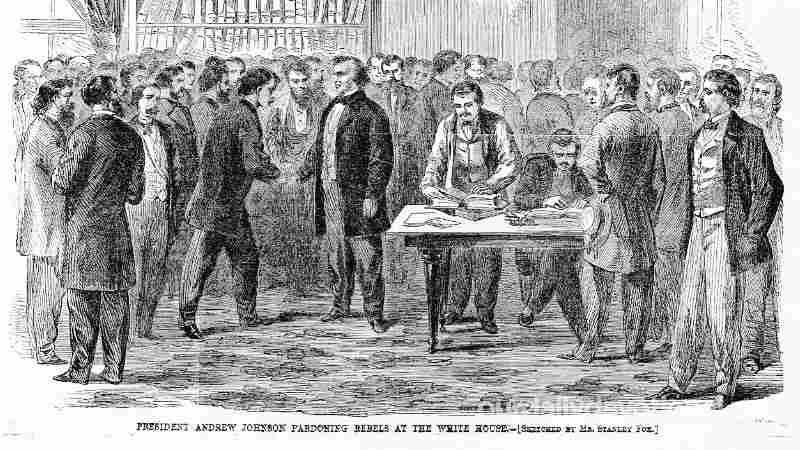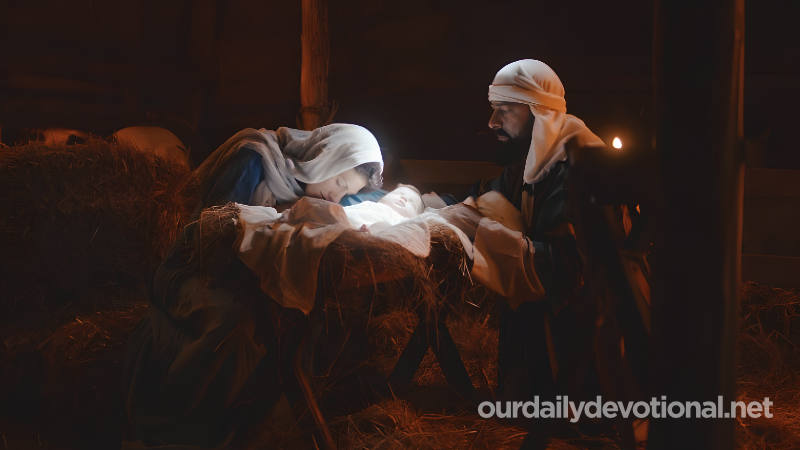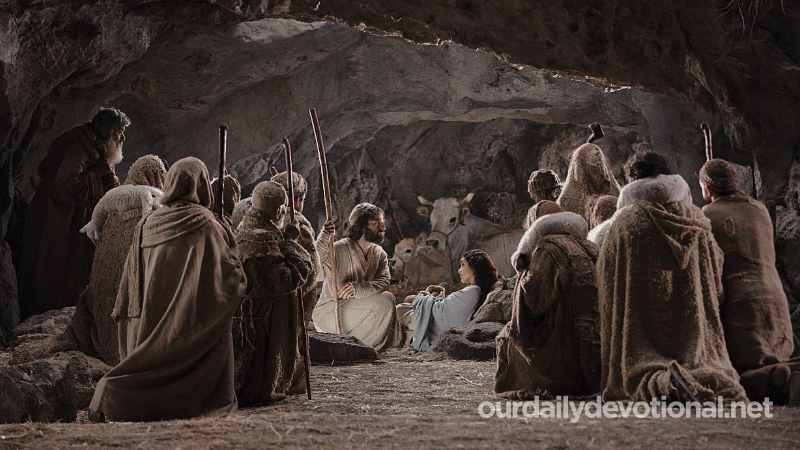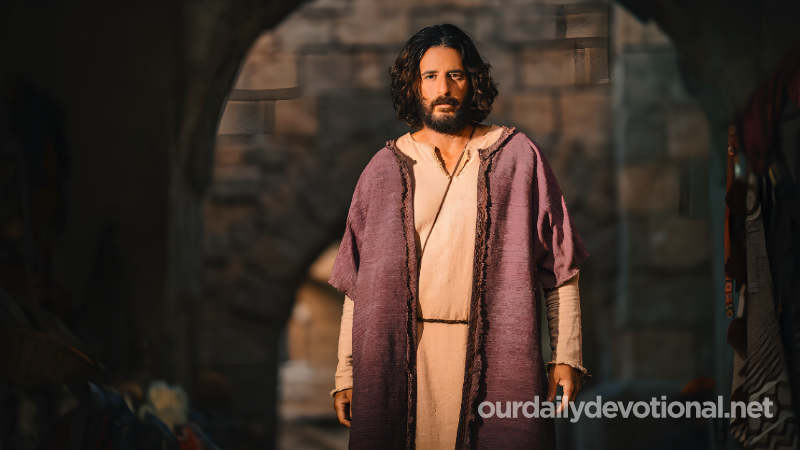I. The text of the Old Testament.
Textual studies seek to establish, by various methods of comparison, between various families of copies of the Scriptures, where their texts may diverge, which is the correct variant in accordance with the lost originals.
This work was almost impossible with the text of the Old Testament, which, in contrast to the abundance of mss. Greeks of the NT, only presented a very homogeneous line of transcription in Hebrew: the "Masoretic text."
However, the ancient Greek version of the LXX gave indications that in ancient times there must have existed a group of Hebrew texts that diverged from the Masoretic text. Today, the panorama has changed greatly after the discoveries of the biblical manuscripts of Qumran (see QUMRÁN [MANUSCRIPTS OF]).
The Masoretic text fully crystallized around the year 99 AD. It constitutes an interwoven system of accents, vowel signs and marginal notes, which indicate how the reading of the consonantal text should proceed.
However, the really important date for the establishment of the basic Masoretic text is the beginning of the second century AD, when Rabbi Akiva and his colleagues, after a careful examination of all the mss.
available, together with the rabbinic traditions that guide reading, they chose a Hebrew consonantal text that has since been fixed. This text can be called proto-masoretic.
Until a few decades ago, then, the question arose due to the lack of copies older than the existing one from the year 1008 AD. (Leningrad Codex B 19A), and the incomplete Cairo Geniza, discovered in the second half of the 19th century, how accurately the OT text had been transmitted.
Today the situation is totally different. The aforementioned discoveries from Qumran, as well as those from Wadi Murabba'at and the En-gadi area, have provided evidence that sheds intense light on the period from 200 BC. until the crystallization of the Masoretic text (TM).
Indeed, the discoveries of the Cairo Geniza, with its numerous portions of the OT text that predate the definitive fixation of the Masoretic tradition regarding vocalization, accentuation and intonation, constitute a bridge that covers the space between the discoveries of Qumran , with mss. between the year 200 B.C. and 70 AD, wadi Murabba'at, with mss. from around the year 135 AD, and the aforementioned codex B 19A from Leningrad.
The Qumran discoveries have provided textual evidence of three identifiable lines of independent transcription of the Hebrew text, according to F. F. Bruce, in addition to others that may belong to textual traditions not yet identified (cf. "The Books and the Parchments", p. 123).
The evidence provided by the mss. of Isaiah found at Qumran is of great interest. The complete scroll (1QIsa), although it presents a good number of divergences in spelling and grammar, does not demand substantial changes. Although it shows similarities with the LXX text, it is closer to the TM than to the LXX.
The incomplete Isaiah scroll (1QIsb), on the other hand, presents much more beautiful calligraphy and a text almost identical to the Masoretic one. In addition to the large number of other mss. that can be called, like these, proto-Masoretic, there is a line related to the LXX and another that presents a close affinity with the Samaritan Pentateuch (see SAMARITAN PENTATEUCH), although related to the Jewish tradition in the divergent passages about the cultural center.
The weight of the evidence is that Rabbi Akiva and his contemporaries had a wealth of materials and a reliable tradition of text transmission from which to work. The Masoretic text also rests on a solid textual tradition of great antiquity, attested by the remains of Qumran.
As F. F. Bruce states, "it is instructive to contrast the variety of types represented at Qumran (belonging to the generations before 70 AD) with the situation in other caves in the Wadi Murabba'at and in the En-gadi region further to the south along the western coast of the Dead Sea.
These caves have yielded manuscripts from the period of 132-135 AD; They were used as hiding places for Jewish insurgent forces in the second revolt against Rome. Like the Qumran manuscripts, sections of biblical texts appear, but unlike the Qumran biblical manuscripts, they exhibit a uniform type of biblical Hebrew text: the type recently established by Akiva and his followers" ("The Books and the Parchments», PP. 123-124).
Thus, recent discoveries lead to discarding the idea that the ancient text diverged from the Masoretic. This idea, supported by several authors based on textual divergences with the LXX, has given way to knowledge of various transcription traditions; The Masoretic text very faithfully represents one of these currents; its fixation at the beginning of the 2nd century AD, together with the mass of evidence in favor of the proto-Masoretic current, as well as internal evidence, currently offers powerful guarantees that the TM is a faithful representative of the originals of the text.
On the other hand, the establishment of these ancient independent traditions of copying also leads to establishing a much greater antiquity for the originals than modern speculation was willing to accept. Although these divergences do not affect the substantial content of the text, the truth is that a few lines of independent copy from a few mss. originals do not emerge in a short time.
The extreme care that the scribes (one of the highest social classes in Judaism, and one of the most responsible jobs) exercised in the performance of their duties is indicated in various places in the Scriptures. Ezra is called “a diligent scribe in the law of Moses” (Ezra 7:6; cf. Ezra 7:11, 12).
The Lord gave his sanction to the scribes in their role as transmitters of the Law of Moses, although he condemned their personal hypocrisy: «In the seat of Moses sit the scribes and the Pharisees.
So whatever they tell you to keep, keep it and do it; but do not do according to their works, for they say, and do not...» (Mt. 23:2, 3). For his part, Paul, extremely well versed in these issues (he had been a disciple of Gamaliel, cf. Acts 22:3), affirms that Judaism had received the custody of the Word of God (referring to the OT), and has nothing what to say against them (Rom. 3:1-2).
For a more detailed examination of the techniques of copying, transmission of the text, etc., see BIBLICAL MANUSCRIPTS, MASORETS. See also CANON, INSPIRATION, SAMARITAN PENTATEUCH, QUMRÁN (MANUSCRIPTS OF).
For a list of the editions made of the Heb. OT text, see also BIBLICAL MANUSCRIPTS.
II. Versions of the AT.
The study of the various ancient versions of the OT is also of utmost importance in determining the history of the text; There are ancient Aramaic versions, such as the Targumen (see TARGUM, although some additional considerations will be given here to the aforementioned article), the Septuagint (LXX), the other Greek versions, such as those of Aquila, Theodotion and Symmachus. Others are the Vetus Latina, the Itala and the Vulgate.
1. The Septuagint (LXX).
It is the most famous and oldest translation of the OT, to Gr. popular (koine). According to legend, Ptolemy Philadelphus (285-247 BC) commissioned 72 Jewish scholars to carry out this work. The LXX version, begun in Alexandria, gets its name from this tradition.
It seems established that the translation of the Pentateuch was truly completed under Ptolemy Philadelphus. The other books of the OT gradually followed, and the entire OT was translated around the year 150 BC. The style and manner of proceeding give evidence of many translators.
Philo, convinced of its conformity to the Hebrew text, says: "When the Hebrews who have learned Greek, or the Greeks who have learned Hebrew, read the two texts, they are amazed at these two editions, and they venerate them as two sisters, or even as one person" ("Life of Moses", by Philo).
In light of the aforementioned discoveries at Qumran, and the existence of mss. heb. related to the LXX, the belief that the LXX is in many places a poor translation of the Hebrew text can no longer be sustained. In any case, the divergences it may show come from an earlier divergent Hebrew copy tradition.
The LXX was adopted by the Christian church as the OT text, and most of the biblical quotations from the OT in the NT are from this version (see QUOTES FROM THE OLD TESTAMENT IN THE NEW).
There appear to have been three major recensions of the LXX. One appeared around the year 245 AD. and the other two are before the year 311 AD. The first is from Origen (Palestine), the second is from Lucian (Asia Minor), the third from Hesychius (Egypt). These three men suffered martyrdom.
The Codex Vaticanus contains the AT gr. almost whole; the Codex Alexandrinus and the Codex Sinaiticus include a large part of this version. The Codex of Ephrem and others. They also contain portions of the AT gr. (See BIBLICAL MANUSCRIPTS.)
2. Later Greek versions.
After the taking of Jerusalem (AD 70), the LXX version lost its popularity among the Jews, due to the use that Christians made of it as the OT text, and as a basis to demonstrate that Jesus was the Messiah.
For this reason the Jews made three new versions of the Heb canon in the second century. Only fragments or quotes are known, with the exception of the book of Daniel of Theodotion, which is preserved in its entirety.
(1) The translation of Aquila, a Jewish proselyte (around 128 AD). Contemporary of Emperor Hadrian; his translation is excessively literal, and almost unintelligible to readers not at the same time conversant in Hebrew. and GR. Aquila wanted to combat Christian doctrines and stop the use of the LXX version.
(2) Revision of the LXX by Theodotion, which can be placed within the first third of the 2nd century AD. Irenaeus says that he was a Jewish proselyte from Ephesus; Eusebius claims that he was an Ebionite Jew. His translation is based on that of Aquila and on the original Heb.
(3) The elegant but paraphrased version of Symmachus, a Judaizing Christian, towards the end of the 2nd century AD. Orígenes also knew three gr versions. anonymous.
Origen (c. 185-254 AD) prepared the Hebrew text, and four versions in six parallel columns for comparison of it.
The layout was like this: First column: the Hebrew text; second: the Hebrew text transcribed into Greek characters; third: Aquila's version; fourth: that of Symmachus; fifth: the LXX; sixth: the revision of Theodotion.
The name Hexapla that this work receives comes from its arrangement in six columns; It was finished around 245 AD, and was followed by an edition devoid of the Hebrew columns. In the 4th century, Jerome consulted these two works, deposited in the library of Caesarea, in Palestine.
They still existed in the 6th century. They were undoubtedly destroyed when the Arabs took over this city in 638 AD. Quotations from the work of Origen appear in the works of the Fathers.
3. The Targums.
Upon returning from the Babylonian exile, the Israelites did not speak Hebrew, but Aramaic, mistakenly called Chaldean. When Ezra and his assistants read the Law to the people, they had to translate it (Neh. 8:8). At first, this interpretation was only an oral paraphrase in Judaic Aramaic.
Finally, this tradition was recorded in writing. Until recently, the only known Targums were the classics (see TARGUM); However, parts of a targum of Job (Cave 11), and fragments of a targum of Leviticus (Cave 4), have been found in Qumran; In Cave 1 a Genesis scroll was found that, although not properly a targum, has several of its characteristics.
Those of particular interest are the "official" ones, which capture the oral tradition in the synagogue in writing, and which allow us to discover the meaning given in Orthodox Judaism to difficult passages. Among them, the targum of Onkelos on the Pentateuch stands out.
Onquelos has sometimes been identified with the aforementioned translator Aquila; However, the evidence indicates that this targum received its current form in the 3rd century AD, being a very faithful translation of the original.
Jonathan ben Uziel wrote a targum on the prophets, which is later than that of Onkelos, and paraphrased. There are other Targums, such as the Neofiti (see TARGUM).
Other early versions of the OT are given in a later section dealing with versions of the entire Bible, or sections of it, intended for use by the Christian church.
III. The text of the New Testament.
There exists for the New Testament a great mass of mss. Due to the persecutions, especially that of Diocletian (see PERSECUTION), copies prior to the 4th century AD disappeared, with few exceptions, such as the Chester Beatty papyri, from the early 3rd century AD, and others, such as the Rylands Fragment, from the first half of the 2nd century AD, containing a passage from the Gospel of John (see GOSPELS, RYLANDS [FRAGMENT OF]), and the famous Greek fragments from Cave 7 at Qumran, before 70 AD, identified as belonging to Mark , Acts, Romans, 1 Timothy, 2 Peter, James (see QUMRÁN [MANUSCRIPTS OF]), among others.
These fragments, due to their smallness, cannot be used for the study of the text; However, they are useful as evidence of the antiquity of the NT texts, and as proof that the fixation of the NT text did not have to wait for a long period of "reworking" in Christian communities, as moderns have claimed. theorists, who seek to see in the Gospels, for example, not a factual account of the person, sayings and works of Christ, but a mythical manipulation accumulated around a "historical" core that would leave little or nothing of the Gospels as we see them. have been transmitted.
Thus, regarding the antiquity of the text, the present archaeological panorama agrees with the internal evidence of the NT and with the ancient testimonies of the Church Fathers regarding its writing and transmission (see CANON, BIBLICAL MANUSCRIPTS, and the articles corresponding to each NT book).
Regarding the content of the NT, there is currently very little uncertainty about the original text. In fact, there has never been any textual variation that substantially affected the text or any fundamental doctrine.
The discoveries of mss. old, along with the enormous work of classifying the great mass of mss. ancient text transmission lines, and their comparison, have made it possible to refine and reach certainty in many passages about the exact phraseology and text of the original, which is of great importance to restore the text to purity. But, happily, it was not about getting out of a bad situation in terms of the known text, but rather improving a more than satisfactory textual situation.
The mss. of the NT are divided into uncials and cursives. Uncial comes from the Latin “uncia”, “inch”. Refers to the mss. written in capital letters, with no spaces in the words, and few or no periods.
The words were divided at the ends of the lines without this fact being indicated by any mark, and without any care being taken to preserve the syllables. Contractions were also made, adding a horizontal line above it to indicate the fact. The main mss. uncials are:
(a) The Sinaiticus, from the 4th century, containing the entire NT;
(b) the Vaticanus, also from the 4th century, containing Matthew to Hebrews 9:14, including the Universal Epistles, inserted, as in other mss., after Acts. Timothy, Titus, Philemon and Revelation have been lost;
(c) the fifth-century Alexandrinus, with the entire NT text;
(d) the 5th-century Ephræmi, with about two-thirds of the NT text;
(e) the Bezæ, from the 6th century, with almost the entire text of the Gospels and Acts, in Gr. and lat.;
(f) the Claromontanus, from the 6th century, with the epistles of Paul, in gr. and lat.;
(g) the Laudianus, from the 6th century, with most of Acts, in Gr. and lat.;
(h) the Basilianus, from the 8th century; It is also called Vaticanus 2066; contains the Apocalypse;
(i) the Porphyrianus, of the 9th century, containing Acts, the Epistles, and Revelation.
While the mss. uncials extend from the fourth to the tenth century, the mss. Cursives, so called because they are written in cursive, are of later date, and occupy the period between the tenth and sixteenth centuries. The cursives are numbered. The most important among them are:
(a) The 1st, from the 10th century, with the entire NT except Revelation;
(b) 33, from the 11th century, containing the entire NT except Revelation. It is assigned number 33 for the Gospels, 13 for Acts and Universal Epistles, and 17 for the Epistles of Paul;
(c) 69, from the 14th century, containing the entire NT. It is assigned 69 for the Gospels, 31 for Acts and the Universal Epistles, 37 for the Epistles of Paul, and 14 for Revelation;
(d) 47, from the 11th century, which contains the Epistles of Paul, and
(e) 61, from the 16th century, which contains the entire NT, although it is attributed to several copyists. It is assigned 61 for the Gospels, 34 for Acts and the Universal Epistles, 40 for the Epistles of Paul, and 92 for Revelation.
There are many other mss., which have been classified into families of copies. Due to their large number and the possibility of grouping them into families, it has been possible to have a fairly well-founded idea of the transmission of the text.
To give total figures, there are currently more than 250 uncial codices, 2,500 cursive codices, in addition to the previous remains of "papyri"; To this we can add about 2,000 "Evangelistiaries" that were used as lectionaries in cult services, and which contained parts of the Gospels.
Other aids for the comparative study and textual criticism of the original Greek text are the quotations from the Fathers, Greek and Latin. The quotations from the Fathers immediately after the apostles are of great interest, because they reflect the text during the second century, of which no more is preserved.
Divergences in the NT texts.
To judge accurately between the divergences of the various families of NT texts, the textual critic must appreciate the intentional and involuntary errors of the copyists. Among the intentional ones, we can count:
(1) linguistic and rhetorical corrections; here the copyist was acting in good faith, attempting to correct what in his opinion might be bad grammar;
(2) historical corrections;
(3) harmonistic, in which the copyist standardizes parallel passages; They are frequent in the Gospels;
(4) doctrinal corrections, such as the famous one in Rom. 8:1 b; or the various passages in which fasting is linked to prayer (Mt. 17:21; Mark 9:29, etc.);
(5) liturgical corrections, especially in the lectionaries, to give a non-abrupt start to the reading.
Involuntary errors include:
(1) slips of the pen, such as confusion between similar letters;
(2) linguistic errors, due to a different dialect habit on the part of the copyist;
(3) vision errors, in which there is a failure to perceive similar letters;
(4) memory errors, in which a bad record may occur in the period between the copyist reading the section to be transcribed and transcribing it on paper;
(5) errors in judgment, including the addition of marginal glosses to the text (see INTERPOLATION).
To address these divergences between the various families of texts, the textual critic, in his attempt to achieve the closest possible approximation to the original text, has developed the following criteria:
(a) In principle, it is an older variation than a more recent one. The old one is supposed to be closer to the original text. However, great caution must be used with this criterion, since in more modern copies of some of the lines of transmission of the text the genuine readings could be found.
For example, there may be the case of comparing a plus. old, discarded as defective, and therefore not worn, with a variant included in a more. most recent, with mss having disappeared. much older with these variants due to their continuous use and consequent wear. In that case, the genuine reading would not be in the ms. old, but relatively recent.
(b) In the case of an easy variant and a difficult one, the difficult one must be taken, since the tendency of copyists is to simplify. This, naturally, when there is sufficient evidence in favor of said variant. Copyists, with the best of intentions, used to simplify complicated grammatical sentences, believing thus to clarify the meaning for readers.
(c) Shorter variants are preferable; Copyists tended to add and interpolate, to amplify the text rather than reduce it.
(d) According to Scrivener, the variant “most appropriate to the author's own style, manner, and mental habits” is preferable; copyists tended to overlook the writer's idiosyncrasies...
(e) Any reading that has great support from the mss must be accepted as undoubtedly original. oldest together with patristic versions and quotations.
(f) The existence of disagreement among ancient authorities indicates that the passage in question was previously distorted.
(g) Great value should be given to the existence of consistent testimony from documents from very remote locations and/or times.
Added to all this is the evidence of the method of studying the transmission lines of the mss. grouping those that show a greater number of common variants into families. In this way, a classification of four groups of texts has been established:
(a) the so-called Antiochian, Syrian, or Byzantine, which is the most popular; It constitutes the basis of the Textus Receptus and the Reina-Valera version;
(b) the Egyptian group;
(c) the alexandrian and
(d) the western one.
Of all these groups, the most accepted today is group (b), although in controversy group (a) has capable defenders and powerful arguments. For a close study of the textual issue, see Hills, E. F.: "The Magnificent Burgon, Doughty Champion and Defender of the Byzantine Text", in Which Biblie?, ed. D. O. Fuller (Grand Rapids International Publications, 1970/1984); Martin, A.: "A Critical Examination of the Westcott-Hort Textual Theory", in Which Bible? (ibid.); Mauro, P.: “Which Version”, in True or False? (Grand Rapids International Publications, 1973/1983); Burgon, J. W.: "The Revision Revised", in True or False?, ed. D. O. Fuller; same author: "The Last Twelve verses of the Gospel according to St. Mark", in Counterfeit or Genuine?, ed. by D. O. Fuller (Grand Rapids International Publications, 1975/1984).
In the study of the different evidences, the so-called Polyglot Bibles have played an important role, which have facilitated the simultaneous study of several texts (see POLYGLOT).
These methods were applied gradually. Origen is the first who can be called a textual critic. The invention of the printing press made clearer the need to arrive at a normative and reliable text.
The first step was taken by Erasmus, whose first edition of the Greek text (with a Latin translation) was published in 1516; The fourth edition, in 1537, gave the definitive text of Erasmus; For critical work he had already been able to use Cisneros' Políglota, published in 1522.
Robert Estienne published the first edition of the gr. in 1546, based on Erasmus and Cisneros. In the third edition he gave marginal readings of fifteen mss. gr. discovered again. In 1551 he published his famous edition divided into verses.
The ten editions of Beza followed, but without making any great progress. The editions of Elzevir, in Leiden and Amsterdam, were published in 1624 and 1633, with reprints until 1678. The one of 1633 is the one that received the name "textum ergo habes nunc ab omnibus receptum", or textus receptus, and which only has 287 variants with respect to the already mentioned text by Robert Estienne.
John Mill marked a turning point in 1707 when, after thirty years of work, he published a new edition. It was Estienne's edition of 1550, but with numerous notes and appendices, the result of his research on 78 manuscripts, numerous ancient versions, including the Peschitto, Vetus Latina and Vulgata.
In his Prolegomena he explained his ideas about how to carry out textual criticism, which gave a new rigor to this discipline.
The works of Bengel (1737) followed; Wetstein (1751-2); Griesbach (1796-1806), who was the true initiator of the classification of the mss. in lines of descent; Lachmann (1842-50); Tischendorf, the great biblical explorer, scholar, and adventurer (his eighth edition, published in 1856-72, was a new turning point for biblical studies), was undoubtedly the most prominent of textual critics, although paradoxically also the most changeable and less coherent; S. P. Tregelles (1857-72); Westcott and Hort (1881).
In the Cambridge Greek Testament of 1887 all the readings of Lachmann, Tischendorf, Tregelles, Westcott and Hort and of the Committee of Revision of the Authorized Version of 1881 are given as marginal notes. Currently, Dr. Bruce Metzger's text, which is a revision of the 1960 Nestlé text, is widely accepted.
Dr. E. Abbott used to point out that "about nineteen out of twenty variations have so little support that, even if there are several readings, no one would regard them as rival readings, and nineteen out of twenty of the remaining ones have so little importance that their acceptance or rejection would not cause any appreciable difference in the meaning of the passages in which they take place.
Dr. Hort's view was that "in one word in eight there are several readings supported by enough evidence to make us stop and examine it; About one word in sixty has several readings supported by enough evidence to make our decision not one to be taken lightly, but there are so many trivial variations that only one word in a thousand is given in which there is a substantial variation that justifies the critic's efforts to decide between variant readings.
Bentley's phrase remains valid: "The actual text of the sacred writings is competently exact, and not one article of faith or morality is perverted or lost, however singularly it might be chosen, even if the wrong decisions were deliberately taken. worst variants of the entire mass of alternative readings.
However, the believing scholar has every reason to discern the text as far as possible, because he is seeking to arrive at the closest correspondence with the original text as God gave it by inspiration to his servants.
Meaning of TEXT AND CLASSIC VERSIONS OF THE BIBLE
I. The text of the Old Testament.
Textual studies seek to establish, by various methods of comparison, between various families of copies of the Scriptures, where their texts may diverge, which is the correct variant in accordance with the lost originals.







